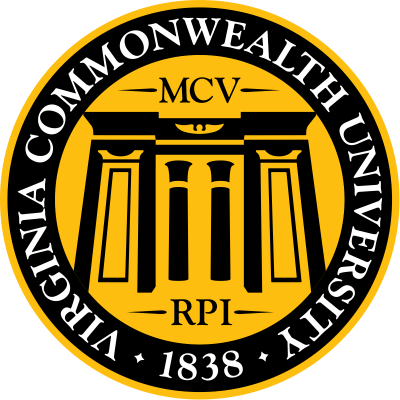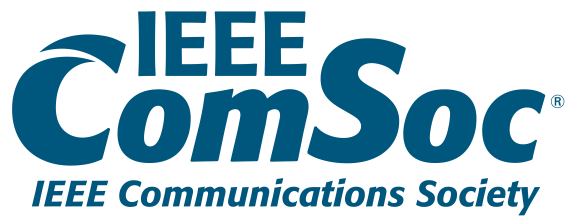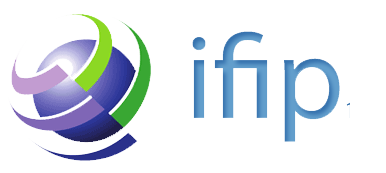Monday, April 8, 2019
| 9:00AM - 12:00AM | T1: Data- and Service-Centric Orchestration of the Internet of Things |
ABSTRACT
Managing the Internet of Things (IoT) is complex. The devices and their communication protocols are highly heterogeneous. Interfacing the plethora of remotely manageable devices is so complex that it currently still prevents the IoT from taking off. Data-centric management architectures reduce the complexity. So does service-orientation. In this tutorial you will learn about the basics of data-centric microservice-oriented management of the IoT. We will cover different key aspects of IoT research including - Name-Based IoT, Service-Centric IoT, Middleware, Peer-to-Peer Systems, Edge-Based IoT, Autonomous Management, Hardware Making. Using a Virtual Box virtual machine, we will go through a practical hands-on with you. You will learn about the modelling of IoT devices and services, semantically rich discovery of services, name-based management architectures, and peer-to-peer systems. At the end we will have implemented a complex IoT scenario together that is composed of multiple collaborating microservices. Please bring your laptop with Virtual Box installed to the tutorial.
BIOGRAPHIES
Marc-Oliver Pahl (pahl@tum.de) leads the IoT Smart Space Orchestration team (https://s2labs.org/) at the Chair of Network Architectures and Services at Technical University of Munich. He is working on data-centric service-oriented management of the IoT since 2008. He publishes regularly at IM, NOMS, and CNSM. Marc-Oliver is strongly involved in the network management community. Among many other activities he is the initiator of the DOMINOS workshop that focuses on the orchestration of the IoT. He received several teaching prices including the Ernst Otto Fischer award for excellence in teaching. Marc-Oliver developed multiple teaching formats including the iLab series (http://ilabseries.ilabxp.com/) with which he taught more then 2000 students not only at German universities about computer networks and distributed systems. Marc-Oliver is a professional member of ACM, IEEE, German Society for Informatics (GI), Deutscher Hochschullehrerverband (DHV), German Chapter of the ACM, and Faculty Sponsor of the ACM Student Chapter in Munich. Among many other things he runs an initiative that fosters the dialog between technical experts and all areas of society called Mensch-Sein mit Algorithmen / Being Human with Algorithms (https://being-human-with-algorithms.org/). He also leads the digital teaching activities of the Académie Franco-Allemande (https://www.future-industry.org/education/).
Stefan Liebald is currently a scientific staff member and lecturer at the IoT Smart Space Orchestration research team (https://s2labs.org/) at the Chair of Network Architectures and Services at the Technical University of Munich (TUM). He received his Master degree in Informatics from TUM in February 2016. Currently he is a PhD candidate at TUM. His main area of interest lies in Internet of Things and Smart Space research. Current work is focused on Smart Space Orchestration using the distributed, software-oriented Virtual State Layer (VSL) architecture. Another area of interest is teaching. Since the last 4 years he is working on a practical networking course (https://ilab2.ilabxp.com/) held at TUM. Furthermore, together with Martc-Oliver Pahl and several other students he is currently preparing a Massive Open Online Course (MOOC) aimed at teaching computer network fundamentals using practical exercises in a virtual environment.
| 9:00AM - 12:00AM | T2: Next Generation Network Automation |
ABSTRACT
The automation of network management and service delivery is becoming critical. All major industries are rapidly digitizing and automating their businesses, relying on state-of-the-art cloud platforms and connectivity services supporting a similar level of business agility and flexibility. CSP (Communications Service Provider) service delivery and network management automation are thus becoming critical for handling the increase in overall complexity and scale of operations created by the transformation of networks into a programmable, software-driven, service-based architecture. Going forward, unprecedented operational agility will be required to support new business opportunities enabled by technology enablers, such as network slicing. In this talk, we review recent industry initiatives in their quest to the so-called "zero-touch" network management highlighting common enablers for a successful end-to-end automation. In its simplest form automation is the action of making a task executable without human intervention. Automation is realized by introducing new automatic functions or by replacing, modifying or augmenting manual functions with automation artifacts (e.g. a script executing a series of commands). Automation applies to different granularities: task (or function) and process, and to the entire management and operation of digital infrastructures i.e. to the entire life-cycle of networks and services. Communication networks and services are already well but fragmentarily automated systems. Individual functions usually exhibit high-level of automation. For example, Interior Routing Protocols (IGP) such as OSPF or IS-IS can automatically discover peers, advertise capabilities, share topology information, compute routing paths and react to failures, independently of external control or human supervision. Automation also covers phases such as installation, configuration, provisioning, and termination, and must cope with the additional level of flexibility introduced by the decoupling of control and data planes and virtualization techniques. The essential challenge arising from this advanced capability is the ability to develop integrated solutions (or systems) out of the composable components with the right levels of performance, robustness, extensibility, reconfigurability; stressing even further the need for standardized interfaces, models and mechanisms. Yet, building an automation continuum remains an open problem. An automation continuum consists in chaining automated functions, with the following properties:
- Vertically end-to-end, i.e. across the protocol stack or from the service-layer to the physical-layer,
- Horizontally end-to-end, i.e. across different technologies or administrative domains,
- Repeatable and reusable in different contexts, i.e. relies on standardized or best current practices for interfaces and models,
- Provisioning customizable "control or touch points" in the end-to-end automation loop for human supervision.
Therefore, the automation continuum provides an approach for combining function automation with process automation, in line with the approach of Continuous Provisioning (CP) (as an additional step of the CI / CD model). The goal of the tutorial is to educate the Network Management community with latest advances in the field of network automation and zero touch networking, and its importance for the future development in the areas of network management and network operations. The tutorial will provide a comprehensive coverage of the Network Automation domain starting with the scope and definitions, introducing the challenges and then developing the different approaches to realize complete future network automation solutions. A special focus will be put on the newly created ETSI ISG ZSM "Zero Touch Network and Service Management" and the standardization landscape.
BIOGRAPHIES
Laurent Ciavaglia works at Nokia in Paris, France inventing new technologies for networks, turning concepts into real-life innovations. Recently, he is having fun (and some headaches) trying to combine network management and artificial intelligence. Laurent serves as co-chair of the IRTF Network Management Research Group (NRMG), and participates in standardization activities related to network and service automation in IETF and ETSI. In recent years, Laurent led the FP7-UNIVERSELF project (www.univerself-project.eu), has worked on the design, specification and evaluation of carrier-grade networks including several European research projects dealing with network control and management. Laurent was vice-chair of the ETSI Industry Specification Group on Autonomics for Future Internet (AFI), working on the definition of standards for self-managing networks. Laurent serves as Editor-in-Chief of the IEEE SDN initiative Softwarization newsletter, vice-chair of the IEEE CNOM, and Standards Liaison Officer of the IEEE Emerging Technologies Initiative on Network Intelligence, and regularly in the technical committees of IEEE, ACM and IFIP conferences and journals in the field of network management and network Softwarization. Laurent has co-authored more than 80 publications and holds 35 patents in the field of communication systems.
| 1:30PM - 5:00PM | T3: Packet-Programmable Networks and BPP: A New Way to Program the Internet |
ABSTRACT
New IP, built around the Big Packet Protocol (BPP) framework, is a novel approach to packet-based networking. This protocol (still in the research stage) is being designed to enable future networking applications that require greater control over the precise behavior of packets in flows than is possible using existing internetworking technologies. As one of its central features, BPP allows packets to carry highly compacted commands and metadata that guide their processing by nodes as packets traverse the network. Examples of targeted applications include the Industrial Internet (involving very tight service level guarantees), Holographic-Type Communications (multiple streams with tight synchronization requirements), Tactile Internet, and more. At the same time, network operators and users of communications services need tools that make networking services easier to adapt and customize, and that help manage, program, and provide operational visibility for those service, all of which BPP can facilitate. The tutorial will first discuss limitations of today’s internetworking protocols and existing network programming models, arguing why new approaches are needed in light of emerging networking application requirements. Subsequently, an overview of BPP as a proposed solution is presented. Several use cases will be discussed that demonstrate how the framework can be used to provide high-precision network services, to implement novel routing solutions, and to address various management problems, including novel solutions for network-embedded network analytics and telemetry collection. The tutorial will also highlight open research questions, including algorithms for new services in the network layer, dynamic data plane optimization, and novel programming models for distributed control planes. Beyond BPP itself, we hope to stimulate research by pointing out ways in which networking technology can be rethought to address future networking challenges.
BIOGRAPHIES
Alexander Clemm is a Distinguished Engineer at Huawei’s Future Networks and Innovation Group in Santa Clara, California. He has been involved in networking software and management technology throughout his career, providing technical leadership for many products from conception to customer delivery, most recently in the areas of high-precision networks and future networking services as well as network analytics, intent, and telemetry. He has served on the Organizing and Technical Program Committees of many management and network softwarization conferences, including as General Co-Chair of CNSM (then: MANWEEK) 2007 and IM 2013 as well as TPC Co-Chair of IM 2005, Netsoft 2017, and IM 2019. He has around 50 publications, 50 issued patents, and several books (including “Network Management Fundamentals”) and RFCs. On the side, he has also been moonlighting on the Adjunct Faculty of Santa Clara University’s Computer Engineering department for a decade. Alex holds an MS degree in Computer Science from Stanford University and a Ph.D. from the University of Munich, Germany.
Uma S. Chunduri is an IP routing expert with extensive background and expertise in Service Provider networks, Enterprise, Mobile backhaul and Broadband Access Networks. He is currently with Future networks core team at Huawei USA as a Principal Engineer, focusing on advanced technology research and standards in the Access and Network Research Labs. His current focus is on programmable network architecture for low latency and QoS sensitive industry verticals. He is working on a new path aware routing mechanisms (PPR) and slice aware mobility and transport network solutions for 5G cellular networks.
Uma has two decades of industry experience. Prior to Huawei, he spent close to a decade at Ericsson, he was a Principal Engineer in System & Technology group and responsible for various IP products including Edge, BRAS and backhaul product lines. His core competency is in the area of IP/MPLS networks, IP FRR, IP Security/IKEv2, and Cellular Mobility with more than 40+ Patents (granted or pending). He is an active contributor at IETF in Routing, Transport, and Security Areas with 7 published RFCs and 15 Internet Drafts. He also has several publications and participates in ETSI as rapporteur of NGP new routing mechanism.
Padma Pillay-Esnault is a Distinguished Engineer in Future Networks team at Futurewei, USA where she works on next generation network architectures. Her current focus is High Precision networks, telemetry, Id-Loc Protocols, Privacy, Mobility particularly 5G and its applications. Padma is involved in standard bodies such as ITU, ETSI and Internet Engineering Task Force (IETF). She is a regular and long-time contributor in IETF and co-author of several drafts and RFCs for OSPF, MPLS/VPNs, LISP and High Availability solutions. She is a veteran in the Internet network engineering community with 25 years of experience innovating, developing and building devices for large-scale networks. Previously, she worked at Cisco Systems and Juniper Networks where she drove technical innovations and various projects in routing (OSPF, ISIS, HA, MPLS/VPNs, Segment Routing, Componentization) across their platforms. Padma earned her Diplôme d’Ingénieur en Informatique Appliqué aux Entreprises from Polytech Montpellier, France. She also holds a MSc Méthodes Informatiques Appliquées à la Gestion des Entreprises (MIAGE) as well as a MSc in Computer Science from University of Montpellier, France. Padma is passionate about developing pragmatic disruptive technologies.
Friday, April 12, 2019
| 9:00AM - 12:00AM | T4: Introduction to Data Science for Network Practitioners |
ABSTRACT
This tutorial will present practical data science for network practitioners from initial data exploration to machine learning for understanding the data. Participants will gain an understanding of basic tools for analyzing large datasets, perform exploratory data analysis, apply classification and clustering methods, and evaluate the analysis. This broad overview is coupled with hands-on exercises for each concept. Specifically, the tutorial will cover (1) basic data processing and data exploration, (2) defining and framing analytics goals, (3) applying classification and clustering algorithms to answer the analytics goals, and finally (4) evaluation and interpretation metrics. We will demonstrate the various concepts using MLab publicly available dataset, specifically the network diagnostic test data covering measurements of throughput and round-trip times. Various tools for data analysis will be explored throughout the tutorial including Google Cloud BigQuery for data exploration, colab for interactive analysis and sharing results, and several python APIs for advanced analytics.
BIOGRAPHIES
Dr. Taghrid Samak is a senior data analyst at Google. She applies statistical modeling for a diversity of network applications from capacity planning to wireless networks. Prior to Google, she worked as a research scientist at Lawrence Berkeley National Laboratory where her research focused on applying data analysis and machine learning to enable cross-discipline scientific discovery, from modeling application behavior in large-scale systems, to enabling statistical analysis for genomics. Dr. Samak holds a doctorate degree in computer science from DePaul University in Chicago, where she worked as a teaching assistant, research assistant and lecturer. She holds a BSc and MSc in Computer Science from Alexandria University, Egypt and is currently pursuing her Juris Doctorate degree at the University of San Francisco school of law. In her free time, Dr. Samak volunteers as a mentor for various women in computing organizations. She is co-founder and steering committee member of the Arab Women in Computing organization.
Julian Quitian is a Network Engineer at Google, where he leverages Google Cloud Platform's tools to gain meaningful insights into complex datasets containing network analytics data. He graduated from the University of Central Florida with a BS degree in Computer Engineering. Before joining Google, he worked on Virtual Reality research at UCF's Interactive Systems and User Experience Lab, and interned at Deloitte and United Launch Alliance. Julian’s experience primarily involves Software Engineering, Database Management, Networking, and IT Service Management.
| 9:00AM - 12:00AM | T5: Information Management in the Blockchain Era – Challenges and Opportunities |
ABSTRACT
Blockchains and Smart Contracts are technical approaches that help to build the foundation of a truly distributed digital society. However, due to its relative novelty, many challenges arise that range since its deployment (i.e., whether a Blockchain is suitable for an application) from scalability aspects to the management of information stored within the Blockchain (i.e., whether a Blockchain satisfies application requirements). This tutorial provides at first a basic theoretical and technical introduction as well as overview on Blockchains and Smart Contracts and, secondly, details deployment and operational challenges as well as their opportunities based on real use cases exploited driven by respective applications developed at the Communication Systems Group CSG of the University of Zurich UZH. Hence, the audience will have not only the first contact with main blockchain concepts, algorithms, and protocols, but also with its key characteristics that may influence the decision of adoption and operation of a blockchain. In conclusion, the major opportunities and challenges for blockchain-based applications will be discussed, complemented with a critical review.
BIOGRAPHIES
Bruno Rodrigues: is currently pursuing his Ph.D. degree at the University of Zurich (UZH) under the supervision of Prof. Dr. Burkhard Stiller. He received his s M.Sc. from the Polytechnic School of University of São Paulo in 2016 where he was Teaching Assistant (TA) of the under graduation Introduction to Computer Networks course and as instructor of practical introductory SDN courses. At the UZH, Bruno is TA of the Communication Systems laboratory and participates as an instructor in the Swiss Course for Advanced Studies (CAS) focusing on a practical hands-on in Blockchains and Cloud technologies.
Eder Scheid: is pursuing his Ph.D. under the supervision of Prof. Dr. Burkhard Stiller at the University of Zurich (UZH). He is also a Research Assistant at the Communication Systems Group (CSG) since December 2017. Eder holds an MSc. Degree in Computer Science from the Federal University of the Rio Grande do Sul (UFRGS), which he obtained in 2017 under the supervision of Prof. Dr. Lisandro Zambenedetti Granville. His master's thesis was entitled "INSpIRE: an Integrated NFV-baSed. Intent Refinement Environment". Eder is one of the teaching assistant of the Blockchains and Overlay Networks class for MSc students at the UZH. Also, in 2018, he organized practical classes in the Swiss Course for Advanced Studies (CAS) focusing on Blockchains and Cloud technologies.
Burkhard Stiller: received the Informatik-Diplom (M.Sc.) degree in Computer Science and the Dr. rer.-nat. (Ph.D.) degree from the University of Karlsruhe, Germany, in 1990 and 1994, respectively. In his research career he was with the Computer Lab, University of Cambridge, U.K (1994-1995), ETH Zürich, Switzerland (1995-2004), and the University of Federal Armed Forces Munich, Germany (2002-2004). Since 2004 he chairs the Communication Systems Group CSG, Department of Informatics IfI, University of Zürich UZH, Switzerland. Besides being a member of the editorial board of the IEEE Transactions on Network and Service Management, Springer’s Journal of Network and Systems Management, and the KICS’ Journal of Communications and Networks, Burkhard is as well Editor-in-Chief of Elsevier’s Computer Networks journal. His main research interests are published in well over 300 research papers and include systems with a fully decentralized control (blockchains, clouds, peer-to-peer), network and service management (economic management), Internet-of-Things (security of constrained devices, LoRa), and telecommunication economics (charging and accounting).
| 1:30PM - 5:00PM | T6: Network Intelligence: Machine Learning for Network Management Operations |
ABSTRACT
Network Intelligence course encompasses three main parts. In the first part of the course, we aim to present the background on Network Intelligence i.e. the latest state of the art on Artificial Intelligence (AI) for network and service management. In the second part of the course, we will delve into Machine Learning (ML) for network data analysis. We will be introducing and discussing various techniques for specific problems (prediction, classification, clustering, etc.), as well as relevant pointers to consider in the domain. In the third part, we will present a hands-on demonstration through a notebook capturing the end-to-end process of leveraging ML in a network management use case (forecasting of network data, anomaly detection, etc.). The demonstration will make use of real network data.
The participants will be presented with:
- An overview of past literature works and ongoing efforts on applying ML for network operations and management.
- A concise course on applying ML for network data analytics with relevant pointers and useful takeaways.
- Insights about best environments to use (opensource libraries and frameworks)
- A hands-on demonstration showcasing ML techniques applied to a network management use case scenario that involves real network traces.
Teaching and hands-on experience of the instructors will be leveraged for best possible outcome.
BIOGRAPHIES
Imen Grida Ben Yahia is currently with Orange Labs, France, as a Research Project Leader on Autonomic & Cognitive Management and Expert in Future Networks. She is also leading the international initiative within IEEE comsoc on “Network Intelligence” http://ni.committees.comsoc.org/. She received her PhD degree in Telecommunication Networks from Pierre et Marie Curie University in conjunction with Télécom SudParis in 2008. Her current research interests are autonomic and cognitive management for software and programmable networks that include artificial intelligence for SLA and fault management, knowledge and abstraction for management operations, intent- and policy-based management. She contributed to several European research projects like Servery, FP7 UniverSelf, the H2020 CogNet and currently the 5G SliceNet. Imen is teaching Cognitive Network Management in Telecom Sud Paris, a module of (6 to 12) hours per year including Network management operations challenges, use case for Cognitive Network Management (AI based) and hands-on showcasing machine learning for real network data.
Bruno Kauffmann leads a team of Data Scientists and AI experts in Orange Labs (France), acting as a catalyzer for deployment of AI within Orange Group. His previous research interest was on queuing theory and performance analysis of network, but from theoretical modelization and practical network measurement sides. He also contributed to the design of Information Centric Networking (ICN) and to cache performance analysis. Bruno reached authored more than 15 papers an h-index of 9 in a few years. Bruno graduated in 2007 from École Normale Supérieure (ENS, Paris, France) and received the Ph.D degree in Networks and computer science in 2010 from Ecole Normale Supérieure and Université Pierre et Marie Curie (UPMC, Paris, France) under the supervision of Prof. François Baccelli. Bruno was responsible of tutorials and lab training from 2007 to 2010 at UPMC, with about 100 hours teaching per year.
Noura Limam received the M.Sc. and Ph.D. degrees in computer science from the University Pierre et Marie Curie, Paris VI, in 2002 and 2007, respectively. She is currently a research assistant professor of computer science at the University of Waterloo, Canada, where she has been teaching 400- and 600-level courses in computer networks and distributed systems (CS456/CS656, CS454/CS654, and CS436/CS636) with combined theory and hands-on training, for the last several years. She is on the technical program committee and organization committee of several IEEE conferences. Her contributions are in the area of network and service management. Her current research interests are in autonomic networking and cognitive network management.








